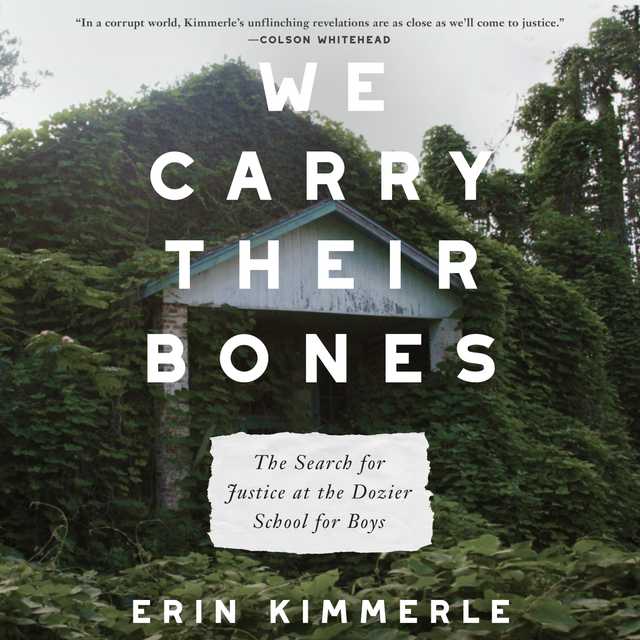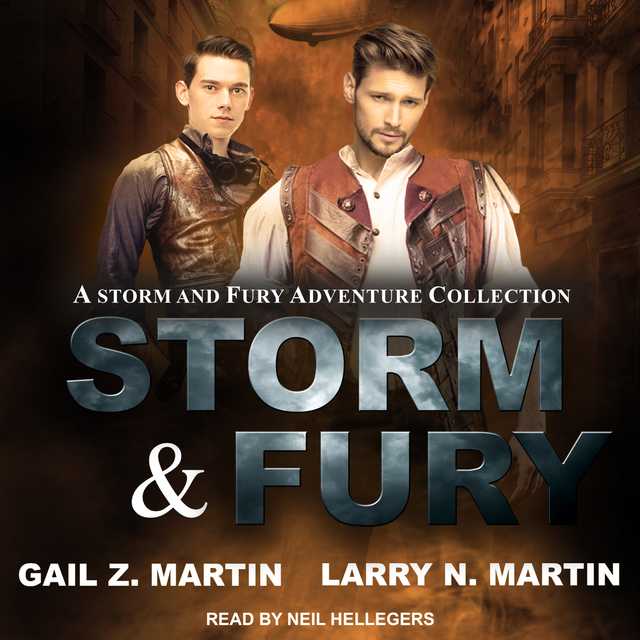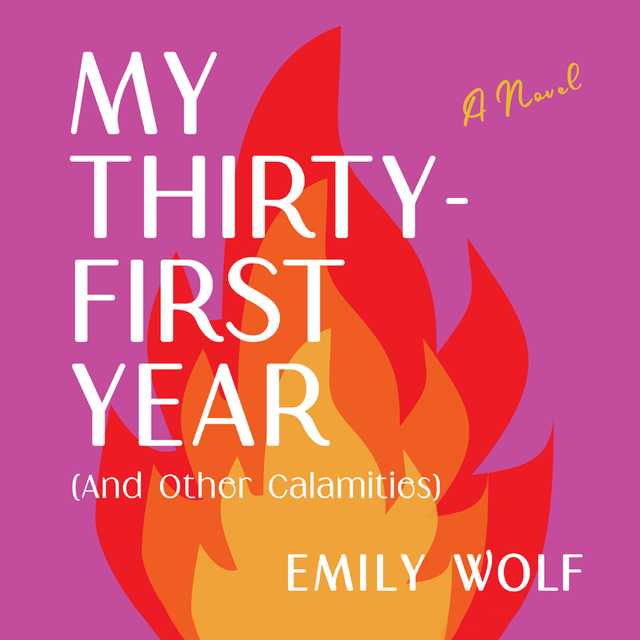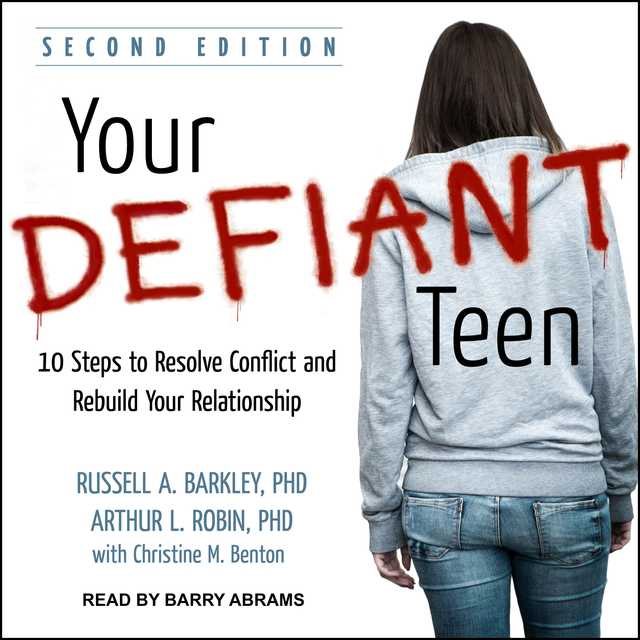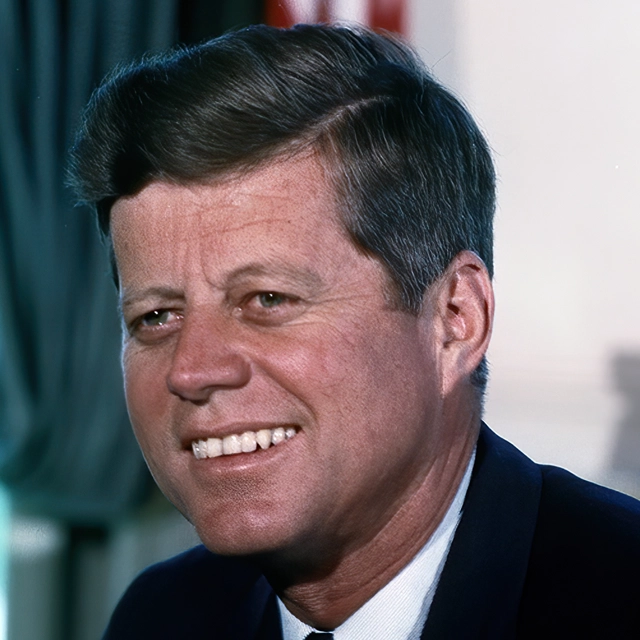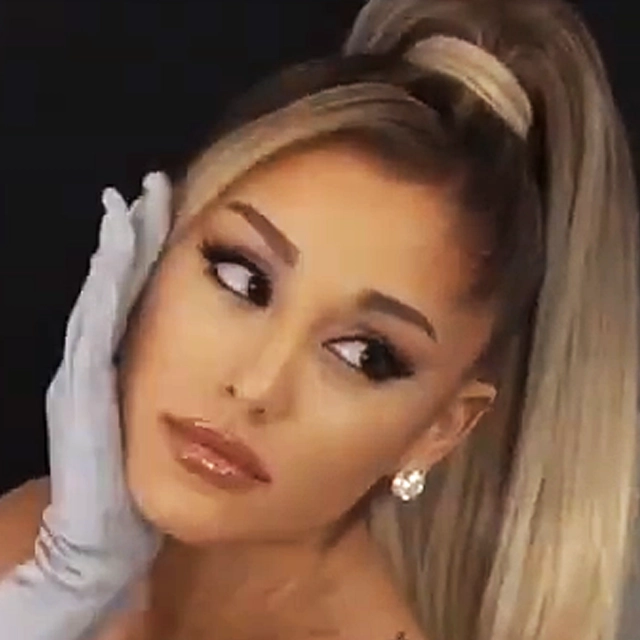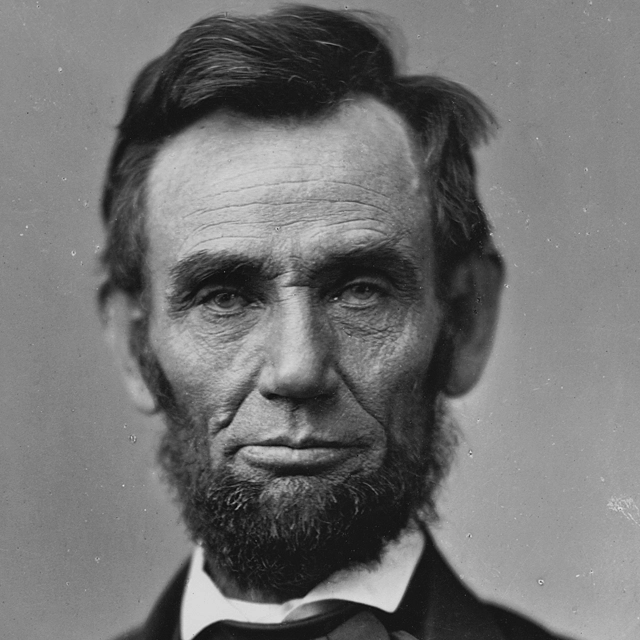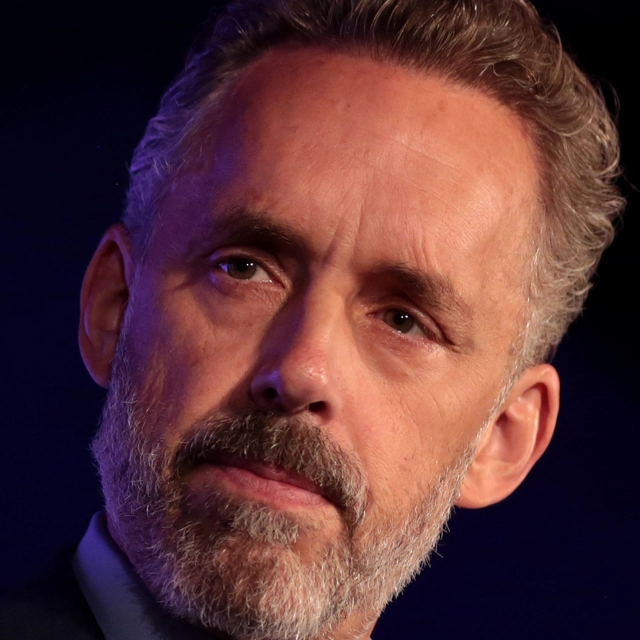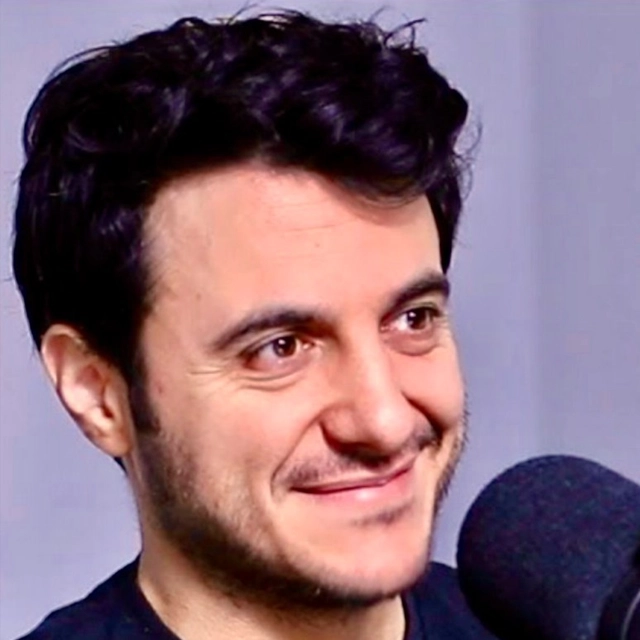We Carry Their Bones Audiobook Summary
“With We Carry Their Bones, Erin Kimmerle continues to unearth the true story of the Dozier School, a tale more frightening than any fiction. In a corrupt world, her unflinching revelations are as close as we’ll come to justice.” -Colson Whitehead, Pulitzer-Prize Winning author of The Nickel Boys and The Underground Railroad
Forensic anthropologist Erin Kimmerle investigates of the notorious Dozier Boys School–the true story behind the Pulitzer Prize-winning novel The Nickel Boys–and the contentious process to exhume the graves of the boys buried there in order to reunite them with their families.
The Arthur G. Dozier Boys School was a well-guarded secret in Florida for over a century, until reports of cruelty, abuse, and “mysterious” deaths shut the institution down in 2011. Established in 1900, the juvenile reform school accepted children as young as six years of age for crimes as harmless as truancy or trespassing. The boys sent there, many of whom were Black, were subject to brutal abuse, routinely hired out to local farmers by the school’s management as indentured labor, and died either at the school or attempting to escape its brutal conditions.
In the wake of the school’s shutdown, Erin Kimmerle, a leading forensic anthropologist, stepped in to locate the school’s graveyard to determine the number of graves and who was buried there, thus beginning the process of reuniting the boys with their families through forensic and DNA testing. The school’s poorly kept accounting suggested some thirty-one boys were buried in unmarked graves in a remote field on the school’s property. The real number was at least twice that. Kimmerle’s work did not go unnoticed; residents and local law enforcement threatened and harassed her team in their eagerness to control the truth she was uncovering–one she continues to investigate to this day.
We Carry Their Bones is a detailed account of Jim Crow America and an indictment of the reform school system as we know it. It’s also a fascinating dive into the science of forensic anthropology and an important retelling of the extraordinary efforts taken to bring these lost children home to their families–an endeavor that created a political firestorm and a dramatic reckoning with racism and shame in the legacy of America.
Supplemental enhancement PDF accompanies the audiobook.
Other Top Audiobooks
We Carry Their Bones Audiobook Narrator
Janina Edwards is the narrator of We Carry Their Bones audiobook that was written by Erin Kimmerle
Erin Kimmerle, PhD, is an associate professor in the Department of Anthropology at the University of South Florida and executive director of the Florida Institute of Forensic Anthropology and Applied Science at USF. She lives with her two sons outside Tampa, Florida.
About the Author(s) of We Carry Their Bones
Erin Kimmerle is the author of We Carry Their Bones
More From the Same
- Publisher : HarperAudio
- Abraham
- American Gods [TV Tie-In]
- Dead Ringer
- House of Sand and Fog
- Prey
We Carry Their Bones Full Details
| Narrator | Janina Edwards |
| Length | 8 hours 1 minutes |
| Author | Erin Kimmerle |
| Category | |
| Publisher | HarperAudio |
| Release date | June 14, 2022 |
| ISBN | 9780063030275 |
Subjects
The publisher of the We Carry Their Bones is HarperAudio. includes the following subjects: The BISAC Subject Code is African American Studies, Ethnic Studies, Social Science
Additional info
The publisher of the We Carry Their Bones is HarperAudio. The imprint is HarperAudio. It is supplied by HarperAudio. The ISBN-13 is 9780063030275.
Global Availability
This book is only available in the United States.
Goodreads Reviews
Michael
October 12, 2022
“They was throwaways”In a devoutly religious Ireland, babies and young girls were brutalized and discarded in the infamous Magdalene Laundries. In Canada and the United States, Indigenous children were brutalized and discarded by Indian Industrial Schools in the name of civilizing them: “kill the Indian, save the man.” The book “We Carry Their Bones” reveals how young boys in Florida were imprisoned, beaten and discarded– after all, “... they was throwaways.”What does it tell us when atrocities are allowed to run rampant for decades, and people who sincerely believe themselves to be morally sound have no problem looking the other way. No one ever seems aware of what is going on and it is a total surprise and shock when one day the bones in the graves start talking.The stories surfacing about the Arthur G. Dozier Boys School included reported whipping, torture, sexual assault, and vague explanations for death. For over a century the school served as a reform school under various names, had recently closed under the cloud of these accusations, and there was an urgency by the people of Marianna, Florida to sell off the property as quickly and quietly as possible.A number of haunted men emerged with allegations which had tormented them since their stay at Dozier. These men called themselves the White House Boys, named for the building where beatings were doled out. They were traumatized by memories of classmates disappearing, taken away, never returning. One man told of having to bury his own brother in an unmarked grave and having to remain at that school. The author, forensic anthropologist Eric Kimmerle, details her battles attempting to get justice for these men and the families of boys whose bodies were never located. Her mission seemed simple enough– identify and study the burial remains using sophisticated scientific techniques. She encountered threats and a tremendous amount of resistance from the community, people determined to keep the past sealed.Particularly disturbing is the story about a fire in 1914 where seven boys were burned to death after being chained to their beds in isolation cells. Firefighters and spectators could only watch and listen to the screams as the building collapsed in flames. Later the remains were haphazardly mixed and buried in unmarked plots.This utter disregard for human life is just flooring. Children were imprisoned as early as five years old for crimes such as smoking, skipping school, running away or merely being unwanted. Being poor was enough but being black was also a factor. Seventy percent of the boys buried were African American.The question keeps looming– how could a society ever allow this to happen? This was not the dark ages, the Spanish Inquisition, or diabolical Nazi monsters. This did not happen in some distant third world dictatorship where genocide is something we shake our heads at in a casual disbelief. This was a cruel disposal of children butchered because they were easy to ignore. One of the town’s residents argued with the author “...they was throwaways…” Dehumanize a group and there is no empathy. –In moments like this, I understood what William Faulkner meant when he wrote, “The past is never dead. It’s not even past.” – from author Erin Kimmerle. Could something like this ever happen again? We have come so far and would never do something as callous as, say… warehousing children in over-crowded holding cells.Passages of human cruelty are always difficult to read, especially in a true crime account such as this. Portions of the book get a little bogged down in the science and technique of excavating, demonstrating how painstaking the process is. An important, eye-opening book.Thank you William Morrow and NetGalley for providing the advance reader copy in exchange for an honest review. #WeCarryTheirBones #NetGalley
Valerity (Val)
May 09, 2022
I found this author is just amazing at what she does for a living and how she fought to the end to get answers. She helped many family members who had lost their boys at this awful facility in northern Florida. The book has lots of background and history of the area and the school. The things that went on there were more than cringe-worthy. I liked learning about how they do a dig and later process what they find. Excellent read for the times. I received an advance review copy for free, and I am leaving this review voluntarily.
Nancy
August 29, 2022
I read this over the course of a day and a night, largely because I couldn't put it down. full post is here:http://www.nonfictionrealstuff.com/20...It wasn't all that long ago that I read Colson Whitehead's excellent The Nickel Boys, a novel inspired by the stories of abuse from men who as children were sent to the real-world Dozier School for Boys in Marianna, Florida. It is also a story of the long reach of trauma that lasts well after the horrific events at the fictional Nickel Academy, and how an investigation headed by a team from a Florida university that uncovers a "secret graveyard" sent one man back to finally confront the past and his pain. As Whitehead wrote in his book, "Plenty of boys had talked of the secret graveyard before, but ... no one believed them until someone else said it." By the time he'd written his book, Dr. Erin Kimmerle, a professor at the University of South Florida and a leading forensic anthropologist had already been working at the Dozier School. She explains in We Carry Their Bones that she had been introduced by a friend to a "local reporter" who had been working on "a series of stories" about "the dark history" of the real-life Dozier School, including "brutal beatings and sadistic guards and mysterious deaths." As she notes,"The stories raised questions about a purported cemetery on the school's property, and the reporter had hit a dead end. He had found the families of boys who died in custody and were buried at the school, families that had never found peace, for they'd never been given the opportunity to properly mourn. No one could point to the location of the graves where their brothers and uncles were buried. No state official had stepped up to find those burials."While there was a small cemetery on the once-segregated black side of the grounds known in the records and among the locals as "Boot Hill," Dr. Kimmerle and her team were not "confident" that this was the only burial site. Permission to explore all of the grounds was denied by the Department of Juvenile Justice (which had claim to the side of the school where white boys had been confined and which did not close until 2011), and in 2012, the reason given was "pending sale of the property and other liability concerns." Kimmerle understood that with the sale of the "220 acres of the boys' school land," the new owners might very well "pave a parking lot on top of the graves of little boys," and that time was of the essence. We Carry Their Bones details the work of Kimmerle and her team in investigating the area while trying to discover not only an actual number of burials, but also in trying to identify some of the remains so that they could be returned to their families. There was a surprising amount of resistance to the work, but Kimmerle would not be deterred in her quest, and with the support of the media, of many of the boys' families and of politicians to whom she appealed, her team would go on to not only excavate remains, but also to examine them forensically and to take DNA samples from relatives in her effort to match those remains to names. In the end, she would eventually carry some of the bones of the identified boys to reunite them with their families. Colson Whitehead's blurb on the front of this book notes that "In a corrupt world, Kimmerle's unflinching revelations are as close as we'll come to justice," and at every turn it is obvious that her objective was to offer any support and help she could to the families of the Dozier boys who never made it home. As she points out at the end, "the door was closed to us in the search for historic justice by many who had the power to open it," but Kimmerle's determination and that of all of the people involved made it so they would not and did not fail. It is a difficult book to read on several levels but on the other hand, it is a story that seriously needs telling, right now. very, very highly recommended.
Kathy
September 23, 2022
I picked this book up thinking it was about a historical event and was appalled to read that this “school” wasn’t shut down until 2011. As you read about the names of the elected officials who either helped, or more often hampered, the search for graves at the Dozier School site, there will be some you recognize as still being in power in the state of Florida. For readability, I would give this book 3 stars. At times the science seems repetitive. The true value of this book is in making known how juvenile reform was used as a cover for abuse and free labor. In the end there is closure for a few families, but no justice. Even the fact that the unidentified remains have been rebuffed without any historical marker as to why they are unknown is a continued injustice. It seems we need an encyclopedia of American history that has been shoved under the rug. They say in war, the winner writes the history. In America, it seems our national narrative has been written to flatter the people in power, mainly white males.
Nancy
March 30, 2022
The author of this book began this journey accidentally. As a forensic anthropologist she was called upon to verify 31 graves at an old reform school cemetery. What she discovered was a poorly kept burial spot for the children that died on the campus. As she dug deeper (figuratively speaking and, later, literally), she was approached by some of the survivors of the Arthur Dozier School. Buried in secrecy and shame, the school housed "juvenile delinquents" from ages 5 and up who were imprisoned for minor or no infractions and leased out as slave labor by day, and brutally abused and murdered by night. She uncovered horrific stories which are not clearly shared and attributed for privacy issues but enough is shared that the reader's stomach will turn. Using fascinating technology, Kimmerle maps out part of the land and discovers anomolies that indicate 55 graves instead of 31 that were previously marked. The secrets are vast and not all told nor uncovered, but what Kimmerle found were the grown boys of the "White House," a building painted white where unspeakable brutality occurred; beatings with a leather strap, up to 135 lashes by "The One Armed Man," rapes, and murders. The boys were in their late 60's and older and deeply haunted by their time at the school, struggling with mental health issues for the rest of their lives. Additionally, many families never knew what became of their sons and brothers when they didn't come home. The semi-cemetery gave some of them answers.What the author uncovered was a small town in Florida that did not want the secrets to be told. The school employed their fathers, grandfathers, and uncles who went home every night to their wives and children. They didn't want to know about the systemic racism or the cruel treatment meted out within the walls of the school and the fields in the surrounding areas. The author brings some measure of closure to many of those impacted by the abuses at the school and shines a light on the historical (some are not in the distant history) mistreatment and inequality of the juvenile justice system in Florida. For the sake of brevity and readability, the detail on the lives of the boys is limited as is the story of abuse and death. Kimmerle is a scientist and carefully explains the way she went about identifying the unmarked graves, unearthing them, and identifying them where possible. It's heavier on the science side but the connections formed by her work are a clear by-product that impacted the author and the survivors lives for the better.
agata
June 16, 2022
We Carry Their Bones is a non-fiction book in which the author and forensic anthropologist, Erin Kimmerle, writes about her experience with the investigation of the Dozier Boys School. If that name sounds familiar, that’s because the school was the inspiration behind the 2020 Pulitzer winner, The Nickel Boys. For the boys who were sent to Dozier, they would leave the school haunted by the violence and abuse that they had suffered for the rest of their lives - if they even got out of it alive at all. Kimmerle’s objective was to exhume the bodies of the boys buried on the school’s property so that their families could claim the remains.Though it might seem difficult to believe that anyone would be against allowing people who spent decades searching for their relatives the opportunity to give them a proper burial, Kimmerle’s task wasn’t an easy one. She and her team had to fight tooth and nail to bring some sort of justice for the boys who were killed or died in mysterious circumstances and were hastily buried on school grounds. Back then, these boys were considered throwaways - they were sent to the reformatory for such ‘crimes’ as skipping school or being an orphan. Kimmerle in a very detailed way explains the way poverty, racism, and the lack of the civil rights we have today lead to the boys’ deaths, and how some members of the local community cared more about the town’s reputation than the truth. It’s a very powerful read, although I did find parts of it quite dense and the timeline a bit confusing.TLDR: We Carry Their Bones is an emotional, difficult book about the history that isn’t known well enough, but that deserves our attention.
Annie
May 18, 2022
The story of a reform school in Florida that, over its years of operation from 1900 to 2011, had a reputation for abuse, torture, rape, and sometimes suspicious and/or unreported deaths, often of black children. The author is the forensic anthropologist who went in to determine the number of graves on site, which ended up being much more than reported, and then begin to exhume remains to return to the families. This was a history of the school, including all the brutality, alongside the modern-day excavation and the return of remains to families when possible. The thought of these things happening to grown men would have been difficult, but to imagine my son and or nephews enduring this was pretty sickening, especially when children were sent to places like this for "crimes" like truancy, often without their parents even knowing they were locked up until it was already a done deal, maybe never to be seen again, remains buried in an unmarked grave and forgotten. I actually started crying reading about the fire in 1913 or '14 that killed several children. My little boy, at age 5, is old enough to have been one of those convicted in a court of something like delinquency, later burning to death chained to a wall in a dark isolation cell. FIVE. I can't say it was enjoyable to read, but it was interesting. I especially liked the chapter on reconstructing the remains. 4 stars.
Andrew
July 24, 2022
Awesome! So so so much I loved about this book. First of all, fantastic case to study. Interesting and horrific to uncover the disgusting truth of this institution. I didn’t even know it existed. I loved the reveal of all of the hidden crime and twisted horrors that occurred. I also loved that the author put a chapter about their life and themselves! Nonfiction can quickly become very impersonal, especially true crime. I loved getting a chance to see how our author ended up in this situation studying this case. I feel like her telling a bit about her upbringing drew me more into wanting to learn more about her studies. The only thing I wish was different is I wanted more stories about the horrors that went on at the school. Perhaps it was a lack of documentation or that many of the survivors are no longer alive, but I really wanted more first hand accounts and little mini-biography bits about what life was like at the school and the day to day tragedies. It definitely wouldn’t made the book more true crime than dissertation research.
Richard
May 05, 2022
To call "We Carry Their Bones: The Search for Justice at the Dozier School for Boys" fascinating seems somehow inadequate in fully describing the tangible sense of tragedy that unfolds within the pages of noted forensic anthropologist Erin Kimmerle's book about her work investigating the notorious Dozier Boys School, the true story behind Colson Whitehead's Pulitzer Prize-winning "The Nickel Boys." It's hard to believe that a place like the Arthur G. Dozier Boys School existed here in the U.S., Florida specifically, until 2011 when the years of reports of abuse, cruelty, and "mysterious" deaths finally led to its demise after over 100 years of children as young as six-years-old being sent to its rural Florida Panhandle settings for "crimes" as minor as trespassing and truancy. Some of these young boys never returned home. In the wake of the school's shutdown, Kimmerle stepped in to locate the school's graveyard to determine the number of graves and who was buried in them. Through forensic and DNA testing, Kimmerle began a journey toward uniting these boys with their families and to provide some semblance of justice for these boys who had seen very little actual justice in their lives. The school's shoddy record-keeping indicated a graveyard located somewhere on the grounds with an estimated 31 boys who'd died from a variety of causes. Kimmerle's findings would reveal twice that, though more importantly these findings would help reveal the horrific truth behind years of rumors of violence, sexual assault, and indentured labor in this frightening "school" left over from Jim Crow America in a community that wasn't eager to confront its not so distant past. "We Carry Their Bones" is at its best when Kimmerle vividly and painstakingly brings to life the stories of these boys through family interviews, historical documents, and through her own remarkable work as a forensic anthropologist. The way that Kimmerle writes you can practically visualize these families in front of you telling you their stories and weeping for justice for a loved one deserving of so much more than they've ever received."We Carry Their Bones" is, on the other hand, hindered somewhat by Kimmerle's occasional insistence on rabbit-hole reporting and journalistic asides that add very little to the book and distract from the emotional power of these stories and how Kimmerle's work is revealing long-hidden truths. While the forensic anthropology process is certainly important, at times it's overly detailed and structured in such a way that it interrupts the flow of otherwise riveting material. Kimmerle's strong personality, likely a necessity in a male-dominated field where she excels, occasionally feels overly defensive and takes attention away from the subject matter at hand. It's a relatively minor issue, however, in an otherwise stellar book that I never found less than deeply engaging. Kimmerle does an exceptional job of not only bringing these boys' stories to life, but also of stripping away the governmental, cultural, and institutional facades that allowed a place like the Dozier School for Boys to exist decades after it should have been shut down and decades after even a little bit of exploration would have revealed its truths. Kimmerle takes a rather relentless approach to exploring these issues and the culture underneath the facade of an otherwise warm and welcoming small town where many of its residents had either worked at the Dozier School or knew someone who did. "We Carry Their Bones" is, as Colson Whitehead himself notes, "a tale more frightening than any fiction" and Kimmerle powerfully brings this tale to life in a way that resonates both emotionally and intellectually. Through her work, she carries these boys home to families that have waited for years for answers to questions that many people refused to even ask. Kimmerle shares her journey through the soul of Jim Crow America and through her own use of forensic anthropology as the power of belief helps people find the courage to speak up and those in power finally begin to listen in incremental yet meaningful ways. "We Carry Their Bones" demands that we immerse ourselves in this world so that we can understand the legacy of racism and alleged justice that allowed Dozier School, and schools just like it across America and beyond, to perpetuate itself for so many years. With painstaking detail and remarkable imagery, Kimmerle has crafted one of the year's most remarkable stories about a world we keep saying we left behind but, in reality, is still sitting at our doorstep.
Laura
June 25, 2022
If you enjoyed Colson Whitehead's The Nickel Boys then you owe it to yourself to hear the rest of the story. We Carry Their Bones is the true story of The Dozier School for Boys reform school in Marianna, Florida which for decades was the setting of sanctioned racism, servitude, horrid abuse/torture and even murder. They were called throwaways. Kimmerle is the archeologist hired to help determine what happened to the children and teenagers buried in two graveyards on the grounds. She has written a memorable, informative true crime story that I will never forget.On the Dozier grounds the bones of fifty-five young boys were discovered. Fifty- five boys as young as six who ultimately were given a death sentence for generally minor or trumped up charges. How could this have happened? How do we come to terms with such atrocities? We lost them and we lost all they would have become and all of the generations to come if they had lived. How do we ensure that it never happens again? We have to be informed and not shy away from the worst of ourselves. We have to remember.If you enjoy true crime stories, black history, archaeology, or forensics then consider reading We Carry Their Bones. I deducted one star for some issues with organization and lack of follow through.I received a drc from William Morrow via Netgalley.
Stefanie
September 01, 2022
The Arthur G Dozier School For Boys (also known as the Florida School For Boys) was established in Marianna, Florida, in 1900. The school was segregated, with one area for black boys and one area for white boys. Boys were sent here for a number of reasons, some of which were legitimate and some were not. Boys who got up to nonsense like petty theft, fighting, skipping school, etc were sent here. Others were boys whose families didn't want them. Some were sent there by "officials" who thought they should go for stupid things like smoking. While at these schools, education was not really a thing. They were beaten mercilessly, forced into physical labor, raped, locked in solitary confinement for days or weeks on end, and kept from speaking to their family members. They were also kept in shackles sometimes. It was extremely overcrowded. There was a cemetery on the grounds, known as Boot Hill Cemetery. Boys that died while at the school were buried here. (In some cases. They were also hired out to farms to perform what was essentially slave labor and those that died at the farms were not returned to their families or the school in a lot of cases.) The official claim was that around 30 boys were buried there, mostly due to illnesses and the ones who died in a fire. (Those that died in the fire were white boys who were chained to their beds while the guards went into town to live it up. Horrific.) Extensive forensic investigations were carried out by the author and her team in 2011 when the school was officially closed and plans were in the works to sell the property. Many family members wanted to know what happened to their loved ones who never came home. Some were told they died of illness and some were told they ran away. Others who knew for sure that their family members were buried there simply wanted the remains returned to them to be buried elsewhere and not sold with the property. The forensic investigation was a really complicated process, not helped along by the fact that the town was extremely racist and wanted to ignore or forget about the terrible things that were done to people by themselves or their elders. This woman had way more patience than I would have in dealing with these obtuse and irritating people in this town. (At one point they said the investigation was going to kill tourism, but I have no idea why anyone would want to visit this town if the people that live in it behave the way that so many of them did.) I bought this book on accident, originally thinking it was a book about Native residential schools. I was slightly disappointed, but I had never heard about this place or these boys. I learned a great deal from this book about how one conducts forensic archaeology projects, and how important it is to remember things that happened in OUR COLLECTIVE HISTORY and not bury or dismiss it. This book was also really infuriating. The attitudes of many of the local townspeople were disgusting and made me want to throw bricks at them. The hiding, lying, run around, and gossiping was disgraceful. The treatment of CHILDREN in this "school" was beyond cruel and abhorrent. Even if they were "bad" kids, they did not deserve to be treated the way they were and damaged physically and mentally for the rest of their lives. I also have to say that I am a born and raised Southerner (I wish I wasn't, because I do not belong here) and this book really solidified the stereotypes that people have of the South. People in the South cannot seem to imagine why people think so negatively about them, but I mean....come on.... I can certainly see why. I also encourage you to look up interviews on YouTube or the news given by men who were incarcerated in this place as children. It is horrific and heartbreaking. This book is a must read.
Sandy
August 13, 2022
Source: Library Digital AudioLiving in Florida, my antennae always perks up when I hear about another (and another and another) atrocity of racism uncovered in my state. It's shameful. Our history of abuse knows no ends...probably the most famous being The Groveland Boys in Lake County, led by the grand poohbah of hate, Willis McCall. But there are dozens, hundreds of cases, and The Dozier School for Boys is just one. The school was established in 1900 and was just recently shut down in 2011 after over a hundred years of reports of abuse, rape and murder. It was originally established as a rehabilitation for wayward boys...sort of the first step before juvie...boys accused of running away, being little shits, petty theft. The ages ranged from 5 to 21. (Can you even imagine...a 5 year old?) Instead, boys were chained to their beds while a fire burned down a wing. Runaways were gunned down. Beatings and rapes were administered in a shack called "the White House". Some survivors, now in their golden years, have spoken up and have provided horrific accounts of their time at the Dozier School for Boys. The secret is out.This story is written by forensic anthropologist Erin Kimmerle, who got involved when she learned that while there was a graveyard of approximately 30 poorly-marked graves, there were MANY more stories of deaths. Where had those bodies gone? Determine to find out and reunite lost boys with their grieving families, Erin and her team used ground-penetrating radar, archaeology and DNA to identify and exhume almost twice that number. The townsfolk of Marianna (the location of the school, not far from Tallahassee) as well as all levels of officials were pissed. This was a very dark stain on their reputations, and a legal and media fight ensued. Roadblocks and trash talk at every turn. But they persisted, bonded with the survivors, and put many souls to rest with the rest of their family remains. I love a true story that I can Google, and if you are like me, you will appreciate this one. I say appreciate because it's not really enjoyable. I had to pick and choose the time when I listened, because the story is just appalling and devastating. It needs to be heard though. And for all you forensic geeks (me included), the actual process of excavating the bodies and determining identity was fascinating. Also, little fist-pump for USF, my daughter's alma mater.The audio was narrated by Janina Edwards, a new voice for me. She did a great job delivering this unpleasant story with a smooth, calm demeanor. I found it interesting that they chose an African American woman to narrate from the viewpoint of a white woman...originally I thought Erin Kimmerle was black. I guess it doesn't matter, but I just thought it was an interesting casting choice.
Most Popular Audiobooks
Frequently asked questions
Listening to audiobooks not only easy, it is also very convenient. You can listen to audiobooks on almost every device. From your laptop to your smart phone or even a smart speaker like Apple HomePod or even Alexa. Here’s how you can get started listening to audiobooks.
- 1. Download your favorite audiobook app such as Speechify.
- 2. Sign up for an account.
- 3. Browse the library for the best audiobooks and select the first one for free
- 4. Download the audiobook file to your device
- 5. Open the Speechify audiobook app and select the audiobook you want to listen to.
- 6. Adjust the playback speed and other settings to your preference.
- 7. Press play and enjoy!
While you can listen to the bestsellers on almost any device, and preferences may vary, generally smart phones are offer the most convenience factor. You could be working out, grocery shopping, or even watching your dog in the dog park on a Saturday morning.
However, most audiobook apps work across multiple devices so you can pick up that riveting new Stephen King book you started at the dog park, back on your laptop when you get back home.
Speechify is one of the best apps for audiobooks. The pricing structure is the most competitive in the market and the app is easy to use. It features the best sellers and award winning authors. Listen to your favorite books or discover new ones and listen to real voice actors read to you. Getting started is easy, the first book is free.
Research showcasing the brain health benefits of reading on a regular basis is wide-ranging and undeniable. However, research comparing the benefits of reading vs listening is much more sparse. According to professor of psychology and author Dr. Kristen Willeumier, though, there is good reason to believe that the reading experience provided by audiobooks offers many of the same brain benefits as reading a physical book.
Audiobooks are recordings of books that are read aloud by a professional voice actor. The recordings are typically available for purchase and download in digital formats such as MP3, WMA, or AAC. They can also be streamed from online services like Speechify, Audible, AppleBooks, or Spotify.
You simply download the app onto your smart phone, create your account, and in Speechify, you can choose your first book, from our vast library of best-sellers and classics, to read for free.
Audiobooks, like real books can add up over time. Here’s where you can listen to audiobooks for free. Speechify let’s you read your first best seller for free. Apart from that, we have a vast selection of free audiobooks that you can enjoy. Get the same rich experience no matter if the book was free or not.
It depends. Yes, there are free audiobooks and paid audiobooks. Speechify offers a blend of both!
It varies. The easiest way depends on a few things. The app and service you use, which device, and platform. Speechify is the easiest way to listen to audiobooks. Downloading the app is quick. It is not a large app and does not eat up space on your iPhone or Android device.
Listening to audiobooks on your smart phone, with Speechify, is the easiest way to listen to audiobooks.

